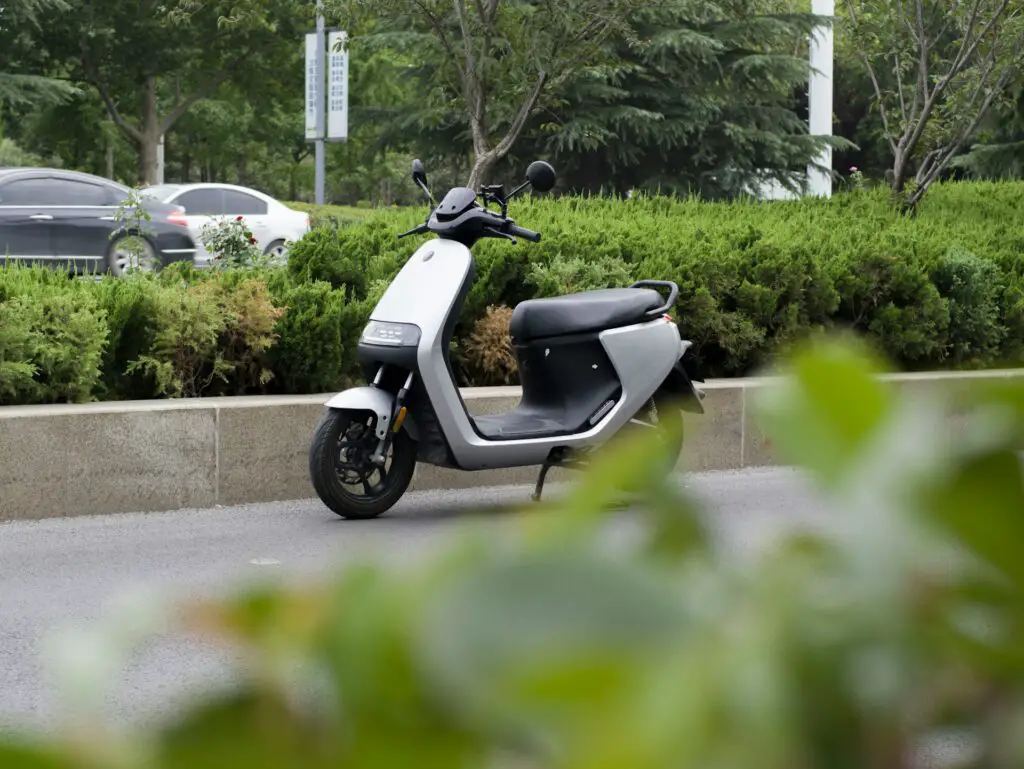Wondering if electric scooters come with regenerative braking? Electric scooters are revolutionizing urban commuting with their sleek design, eco-friendliness, and advanced technology. One such innovation is regenerative braking—a feature often touted for its efficiency and ability to extend battery life.
But do electric scooters have regenerative braking, and how does it work? Let’s explore this technology, its applications, and its benefits for electric scooters.
What Is Regenerative Braking?
Regenerative braking is a system that converts kinetic energy (motion) into electrical energy, which is then stored in the scooter’s battery.
Here’s a breakdown of how it works:
- Deceleration Phase: When you apply the brakes, the system redirects that energy instead of wasting the energy as heat (as in traditional friction braking).
- Energy Conversion: An electric motor that propels the electric scooter starts acting as a generator, converting the kinetic energy into electricity.
- Battery Storage: The electricity is then stored in the battery, effectively “recycling” energy that would otherwise be lost.
This technology is already a mainstay in electric vehicles like cars, trains, and bicycles. Its adaptation to electric scooters reflects the ongoing push for efficient, eco-friendly mobility.
Do All Electric Scooters Have Regenerative Braking?
The simple answer is NO, Not all electric scooters are equipped with regenerative braking, but many mid-range and high-end models include it. The presence of regenerative braking depends on several factors which include:
- Cost: Regenerative braking systems can increase the price of a scooter. Budget models often forego this feature to keep costs low.
- Battery and Motor Compatibility: For regenerative braking to work, the scooter needs a motor capable of generating electricity and a battery designed to store this energy.
If you’re in the market for an electric scooter and prioritize efficiency, check the specifications for regenerative braking.
How Regenerative Braking Works in Electric Scooters
The process of regenerative braking in electric scooters is simpler than in cars or other large vehicles but follows the same principles:
- The Motor Reverses Roles
During normal operation, the motor draws power from the battery to propel the scooter. When regenerative braking kicks in, the motor switches roles and acts as a generator. - Energy Redirection
As the scooter slows down, the kinetic energy from the wheels spins the motor, generating electricity. - Battery Recharge
The generated electricity is sent back to the battery, providing a small recharge.
Benefits of Regenerative Braking
Regenerative braking offers several advantages that make it a valuable feature for electric scooter users:
1. Extended Battery Life
Regenerative braking captures energy during deceleration, which can slightly increase the overall range of your scooter. While the effect isn’t dramatic, every bit counts—especially for long commutes.
2. Reduced Brake Wear
Since regenerative braking slows the scooter without relying solely on friction brakes, the wear and tear on brake pads is reduced. This translates to lower maintenance costs over time.

3. Eco-Friendly Efficiency
Recycling energy is more sustainable than wasting it as heat, aligning with the eco-conscious ethos of electric scooters.
4. Improved Control
Regenerative braking often provides smoother deceleration, enhancing rider safety and control compared to abrupt stops with traditional brakes.
Limitations of Regenerative Braking
While regenerative braking has its perks, it’s not a perfect system. Here are some limitations:
1. Limited Energy Recovery
Regenerative braking typically recovers only a small percentage of the energy lost during deceleration—around 10-30%. It won’t significantly boost your scooter’s range, but it does add a small advantage.
2. Doesn’t Replace Friction Brakes
Regenerative braking isn’t powerful enough to stop the scooter completely. It works best as a supplemental system alongside traditional brakes.
3. Dependence on Speed
Regenerative braking is more effective at higher speeds. At low speeds, its contribution to energy recovery and deceleration is minimal.
How to Make the Most of Regenerative Braking
Here are some tips to maximize the benefits of regenerative braking on your electric scooter:
- Plan Your Stops: Begin decelerating early to allow the regenerative braking system to do its job effectively.
- Maintain Your Battery: A well-maintained battery is essential for capturing and storing energy efficiently.
- Combine Braking Methods: Use regenerative braking for gradual deceleration and traditional brakes for emergencies or sharp stops.
Final Thoughts
So, do electric scooters have regenerative braking? The answer is yes—many models feature this innovative technology. While not universal, regenerative braking is becoming increasingly common, especially in mid-range and high-end scooters.
This feature reflects the broader shift toward energy efficiency and sustainability in transportation. While regenerative braking won’t drastically extend your scooter’s range, it offers tangible benefits like reduced brake wear, improved control, and a small boost in battery life.
When shopping for an electric scooter, consider your priorities. If you value sustainability, smooth deceleration, and low maintenance, you might consider going for a model with a regenerative braking system that will extend your battery life.
Discover more from Chikwem
Subscribe to get the latest posts sent to your email.